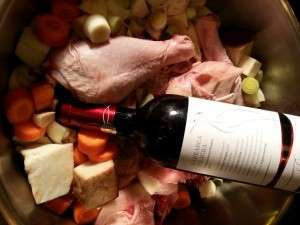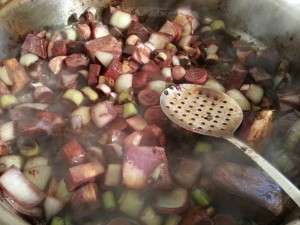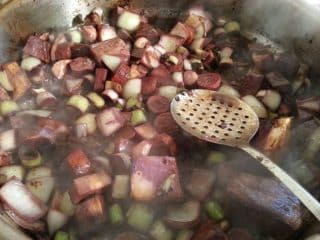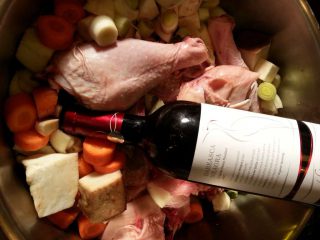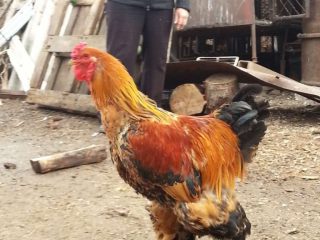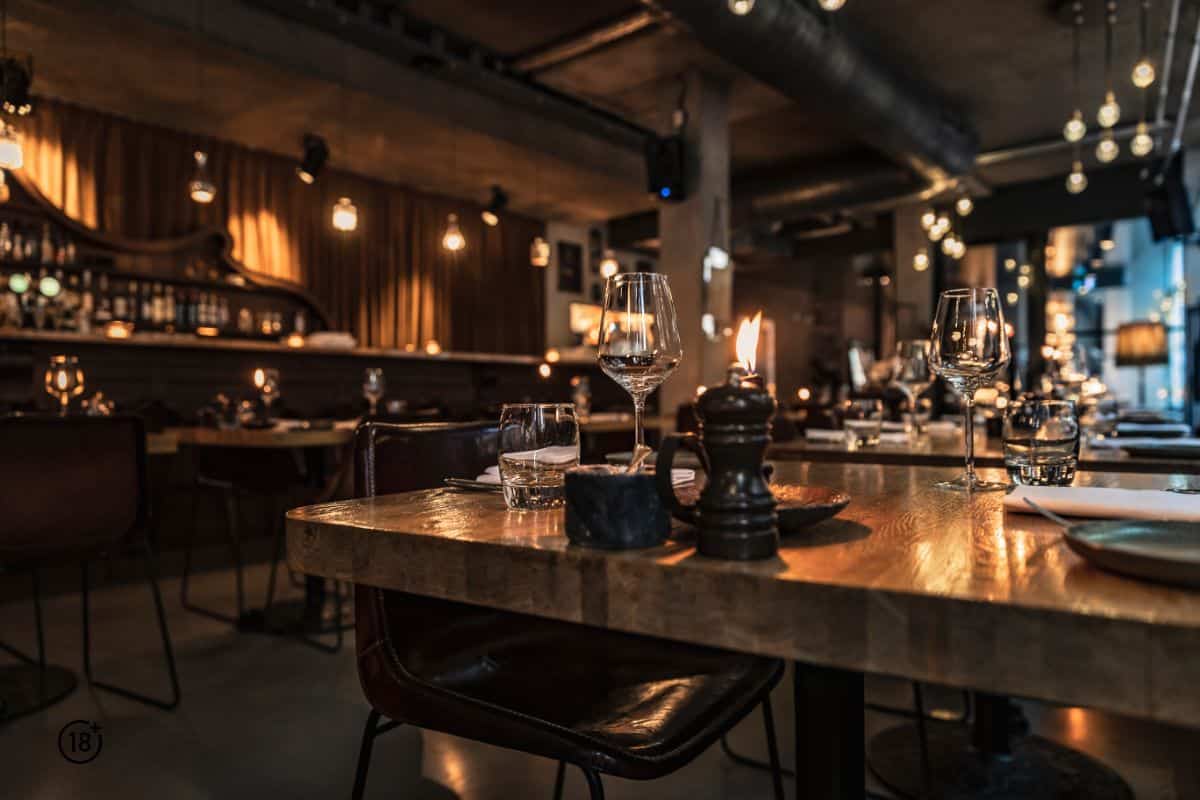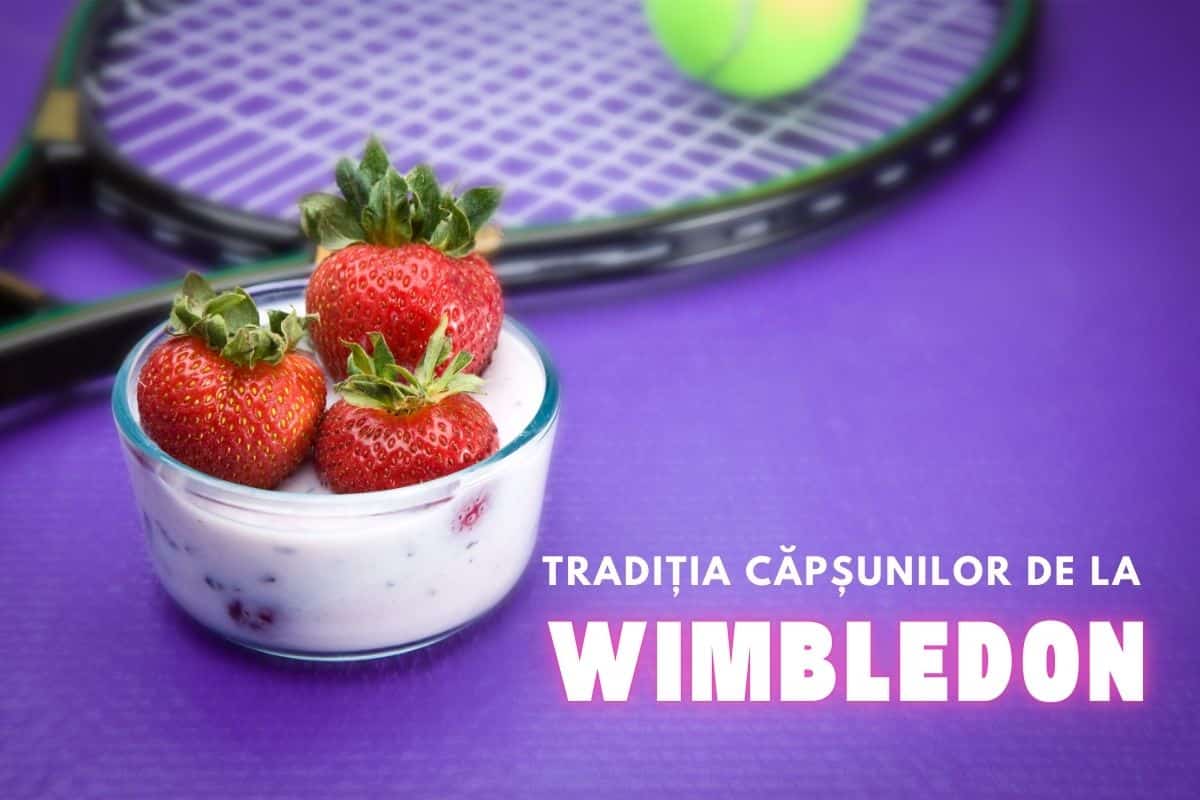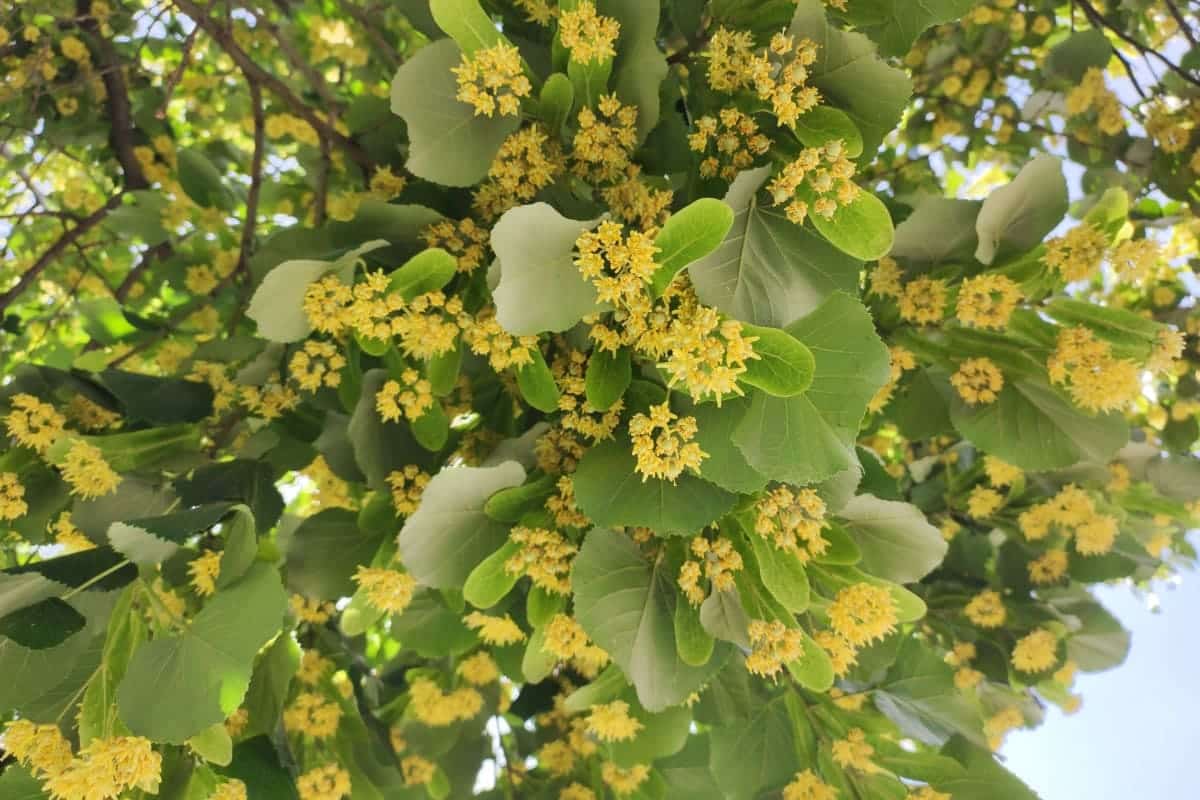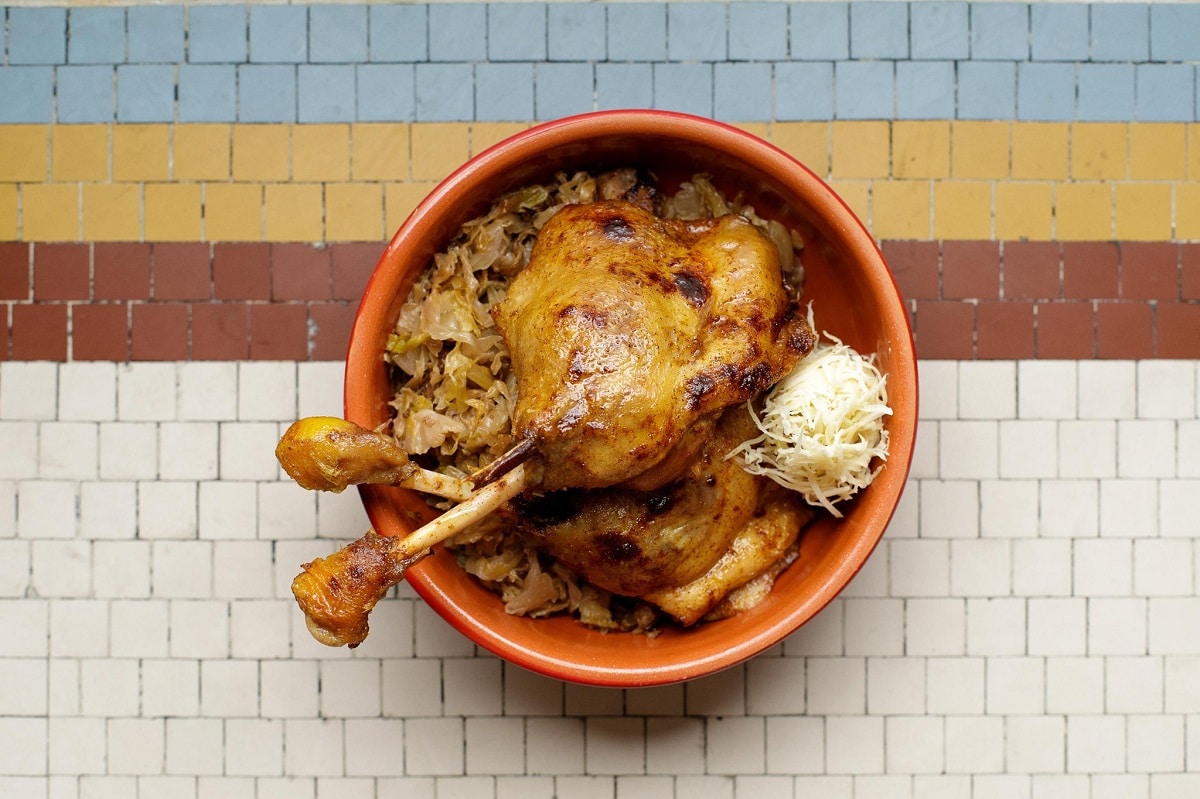Coq au vin, Rooster in wine sauce, Cocoș cu vin
Coq au vin is a classic French recipe and many would say it should be done with French ingredients, but I have discovered – and have talked about it many times – that the Romanian soil can produce equally wonderful products – too bad for the poor management of the resources. Everything in the plates that I serve is made from Romanian products, and the ones who have tasted them can understand why I chose to promote the true and honest peasants that still grow their vegetables and raise their stock in the traditional manner.
To discover more about the project 100%.ro, the effort to promote the Romanian land you can visit www.davidcontant.com.
This is not really a recipe in the way you would expect, it’s does not give precise measures, quantities or cooking times, it’s not a quick stir fry with supermarket chicken breast. This will be a story about the passing of time, respect for food and respect for ourselves.
Our cocoș arrives on Monday morning, featherless but whole, so I have to cut it into specific parts. It’s not an easy job because the bones are tough. A particular treat is the neck, but also the liver and some parts of the back. Every part of meat is cut with the bone so that the stock gets infused with flavor and the piece stays whole throughout the long cooking.
I chose Băbească Neagră for my Romanian cocoș and it wasn’t an accident. Even the name gives the note for a great compatibility. Băbeasca, deriving from the Romanian word for old woman or grandmother – babă – is a rustic and quite acidic wine that will be good in the marinade for a tough meat such as the cocoș. As I stand for the exploration of Romania’s patrimony, I chose this ancient grape variety. Even more the Băbească Neagră from Sapata comes from a virtually ignored part of the country, the county of Tulcea, but with great conditions for winemaking.
It’s 9 o’clock, on Wednesday morning. After two days of bathing in wine, it’s time to start the preparation of the coq au vin. The liquid is strained and the meat is separated from the vegetables. In a very large, well oiled cooking pan, the pieces of meat are browned thoroughly on every side. After removing the meat, I toss the vegetables in the pan so they get caramelized in the oil infused with cocoș flavor. But in between the vegetables I never forget to place a few chunks of slănina, a very nicely slated and smoked cut of pork fat with the rind attached. This will add another dimension to the tartness of the wine sauce.
After the vegetables get a nice color the pan is deglazed with the reserved wine, the meat is placed back in the pan and eight hours of simmering begin. At the first boil you can see the vegetables playing around like children around the understanding grandfather that is the cocoș. They run around in the wine, while the bird steadily starts to soften.
After about seven or eight hours of cooking the meat feels tender. It’s time to thicken the sauce. I use a roux made with truffle infused flour. The time is 18:30, I adjust the seasoning and wait for my guests. Coq au vin is a special dish and has to be served in just the right way – in a cocotte, with homemade bread croutons. The true delight is to dive through the cocotte for the morceau’s that have fallen of the bone and to soak the bread in the velvet-like sauce. The carrots and the baby onions give a balanced sweetness, while the mushrooms and truffles remind us that the cocoș, even though a bird, does not fly, but is one with the terroir.
Culinary regards
David Contant
PS. I decided to write in English because my efforts to attract support from the Romanian public seem tedious. I’m hoping these articles will appeal to a wider English speaking public and this land that I love so much will receive the appreciation it greatly deserves.
PPS: Please don’t drink coffee before and during the meal, it will numb your taste buds!
*

